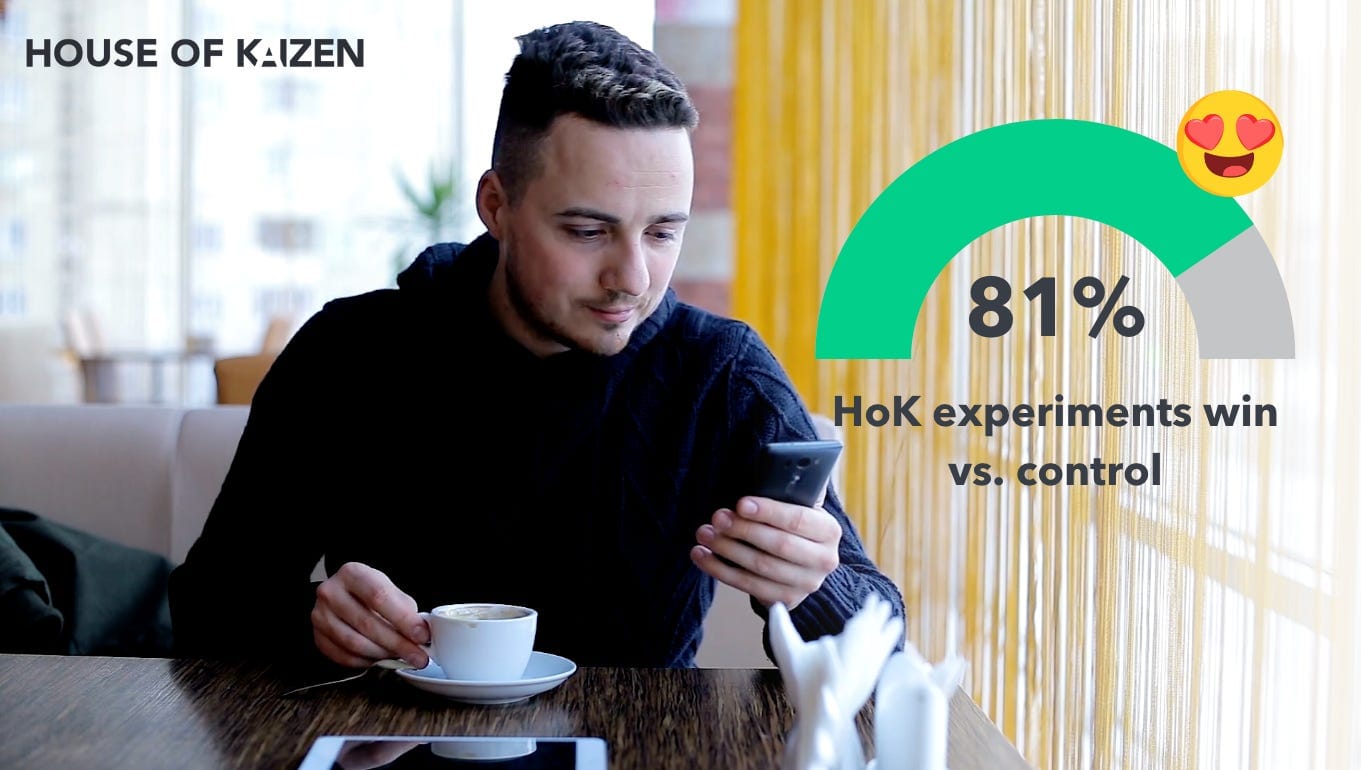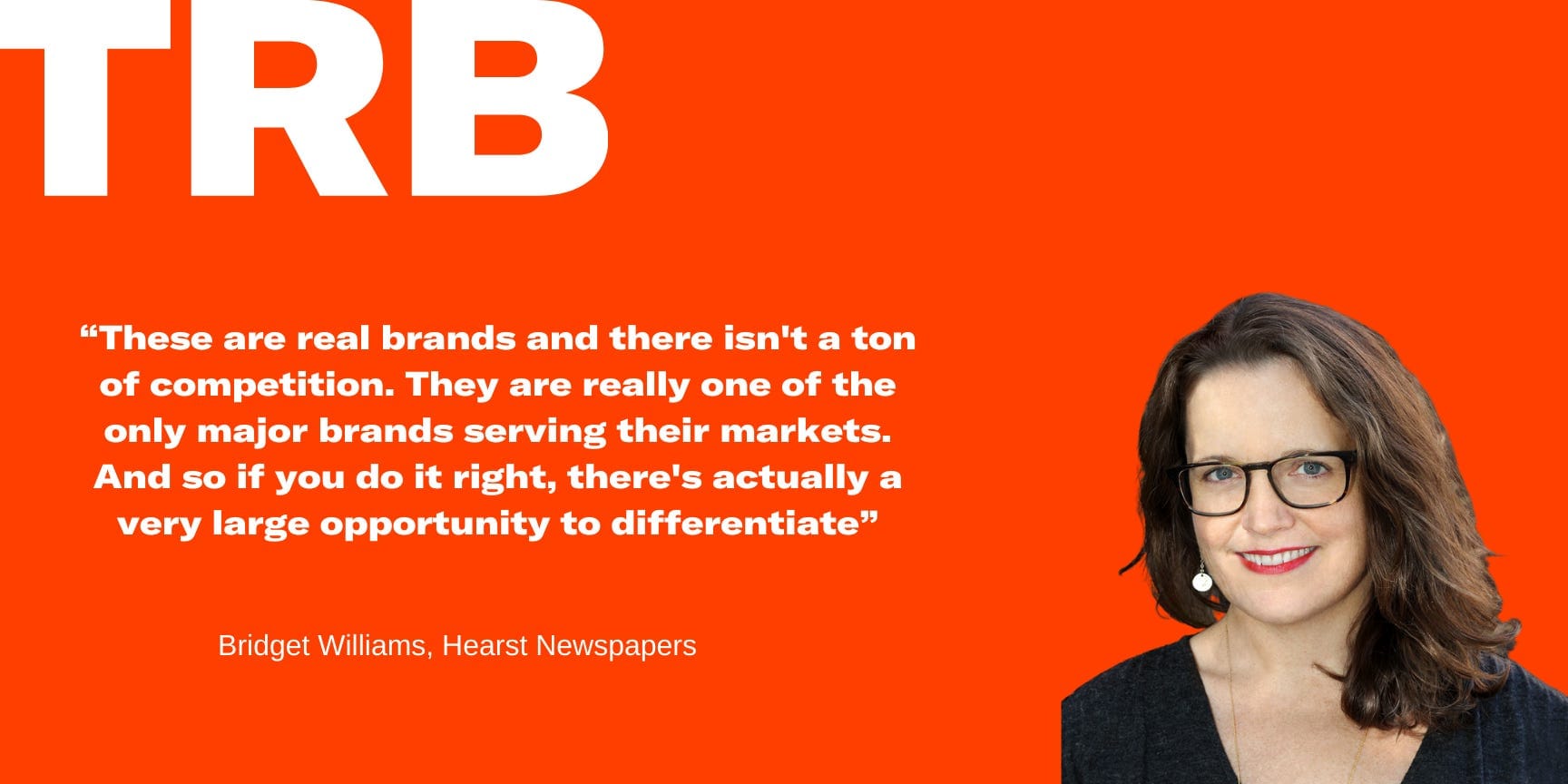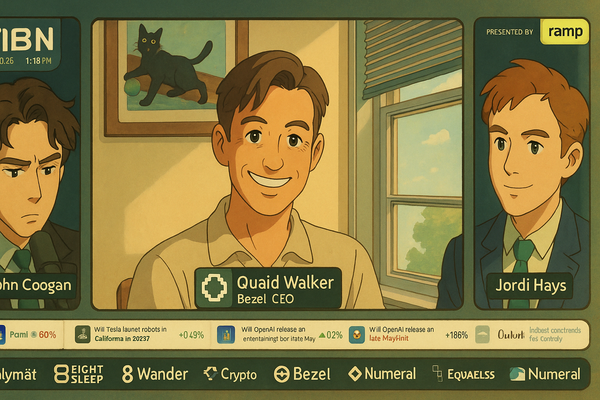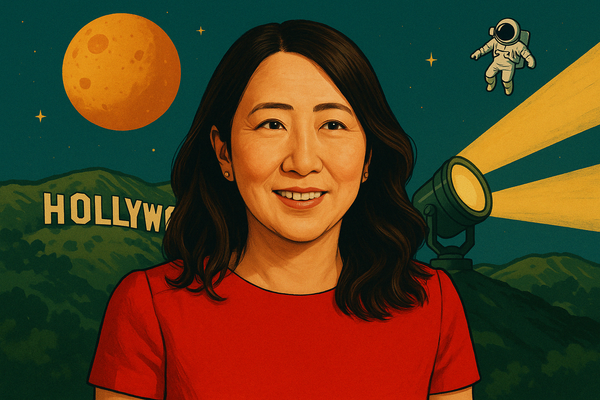Thoughtful mercenaries
Local news needs to go beyond news

On this week’s episode of The Rebooting Show, I spoke to Bridget Williams, chief commercial officer at Hearst Newspapers. I enjoyed Bridget’s realist approach to local news that skips shifting blame in favor of finding workable models. First up, a message from House of Kaizen.


We’re all in pursuit of strong and consistent growth to make our media brands lasting businesses amidst the push and pull of revenue requirements, shifting audience consumption behaviors, and turbulence in the market. House of Kaizen has a Growth Diagnostic used by publishers, and other recurring revenue products, to identify and drive sustainable growth with audience-first experience optimization. Through their decades of working with the world’s best subscription products, they know what creates sustainable net-growth and will help you to find better alignment between your audience expectations and the product experience.

The media business is all hard, but local news is the hardest of the hard problems. The challenges of creating sustainable local news models are well known. At this point, we’re mostly numb to dire warnings of the disappearance of local news as profitable economic activity. Medill recently found that this year, local newspapers disappeared at a rate of 2.5 per week, leaving half of American counties without access to local information.
Bridget Williams is a veteran of the industry. I first got to know Bridget when she was at Business Insider prior to heading to Food52 before landing at Hearst Newspapers in December 2017, where she is chief commercial officer. On this week’s episode of The Rebooting Show, we spoke about the progress toward a sustainable business model for Hearst news outlets like The Houston Chronicle, The San Francisco Chronicle and others around the country. All told, Hearst newspaper properties have 400,000 digital subscribers.
Bridget jokes that she is a “thoughtful mercenary,” as opposed to the slash-and-burn approach of private equity firms, which tend to be mercenary mercenaries. In the language of today, being a thoughtful mercenary means keeping two seemingly contradictory beliefs top of mind: the mission of local news and the eagerness to do whatever is needed, ethically and with the long term in mind, to build a sustainable, resilient business. You need both.
Being a thoughtful mercenary means taking a hard-headed approach to making money, with the realization that much of the hard-news work of local news – investigating corrupt city councils, the school board meetings – isn’t profitable and needs to be subsidized. Bring on the puzzles, dog park reviews and deals.
“We understand the need to do all sorts of fun and utility and make money in lots of different ways, but we are going to use those profits to fund the news,” Bridget told me.
A year ago, Hearst launched My San Antonio, a lifestyle offshoot from its San Antonio Express-News for the booming San Antonio area, which boasts the highest population growth rate among big cities by one measure. The site is meant as a newcomers guide to the city, with news on issues like a taqueria offering $5 breakfast specials, a photo montage of JFK’s trip to San Antonio before his assassination in Dallas, and a steady flow of commerce-friendly content on deals at Walmart and discount designer sunglasses.
Hearst is reading the launch of a new digital brand, Weekend, that will focus on interesting and fun things to do in local areas, whether that’s concerts or leaf-peeping hikes. It’s a local twist on the commerce plays at many publishers. Rather than products, the opportunity for commerce in local is more around ticketing, travel and services.
This is an updated version of the old newspaper playbook in many ways by focusing on utility. News will always be part of that, but there are ways to be useful to a local community beyond the crime, fires and corruption. In fact, broadening the aperture to include more commercially viable areas is a necessity – and not new.
“In the olden days, people subscribed to print newspapers for that bundle,” Bridget said. “And inside that bundle was coupons, shopping, puzzles and comics.”
Normal people’s lives are not all about “chaos at the border” and culture war battles. People want to know about the new dog park. The local newspaper was always a bundle of lifestyle information – I can remember as a kid reading in the Philadelphia Inquirer Ann Landers repeatedly and intrepidly weighing into the fraught issue of men leaving the toilet seat up – that is both popular and profitable. This approach needs to be adapted for a different time, and to be clear without a lot of the artificial advantages local newspapers enjoyed for years that arguably resulted in ossified businesses that mismanaged the digital transition.
“These are real brands and there isn't a ton of competition,” Bridget said. “They are really one of the only major brands serving their markets. And so if you do it right, there's actually a very large opportunity to differentiate.”
The New York Times is now relying more on their non-news products to drive subscription growth as part of its bundling strategy. With Wordle and Connections, The Times is now something of a games company with a news operation. The Hearst twist on this is Puzzmo, a gaming platform. These are the kinds of approaches that are needed rather than hoping for a savior.
“We know that there is a ceiling of people that want to read a general news product in the local market,” Bridget said. “But we know there's lots of other pockets of people that care about specific things.”
I like this messaging because there is a realism to it. Many times people throw their hands up in the face of the challenges facing local news, turning instead to fantasies of silver bullet solutions like benevolent billionaires, government handouts, tech company subsidies and the like. And all of those approaches have a place. I suspect “solving” the local news challenge will be a lot like how the U.S. approaches health care: a crazy-quilt patchwork of disparate approaches that imperfectly get the job infuriatingly and partially accomplished.
Check out the full conversation on Apple, Spotify or wherever you get your podcasts.
Video advertising is a gamechanger
For many publishers, achieving 100% monetized video coverage on your site is not an easy task. Read more about why it's not as difficult as you might think, and the benefits you can expect with having video on every page - not only higher ad revenue but also increased user engagement and article recirculation.
Thanks for reading. I hope all the Americans enjoy the Thanksgiving holiday. I’m heading to London after Thanksgiving for a week. Get in touch if you want to meet up. You can reply to this email or send me a note at bmorrissey@therebooting.com.




